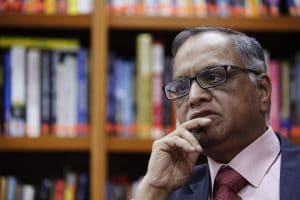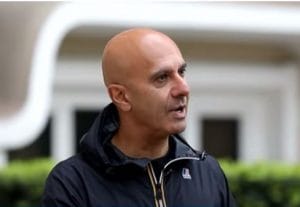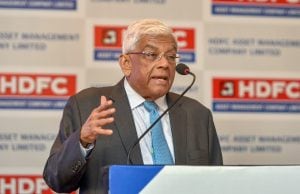How the empowered communities can catapult transformation in rural India
Summary
Success stories from across the subcontinent show that bringing about social transformation requires one to break the donor-recipient model and empower communities to act as agents of change, writes Zarina Screwvala from Swades Foundation, and Dalberg’s Shruti Goyal .
The journey of the now-legendary Self Employed Women’s Association (SEWA) began with an article in a local Gujarati newspaper in 1971. A group of handcart pullers and head loaders had approached the women’s wing of the Textile Labour Association, seeking an end to exploitative wage rates, and Ela Bhatt, who led the women’s wing at the time, wrote a scathing article, highlighting the workers’ grievances.
It provoked backlash from the employers, who wrote a counter article arguing that they were, in fact, paying fair wages. The workers, with help from the Textile Labour Association, reprinted the employers’ claims on small cards and distributed them in the market. The strategy proved effective enough for more women to come forward, leading to the creation of an association of women in the informal economy. Today, SEWA organises 2.5 million informal workers into self-run and self-maintained collectives across India.
Around the same time, more than 1,000 miles away, Prof. Yunus at Bangladesh’s Chittagong University, was in the midst of launching an action research project in a village called Jobra. He started extending loans to low-income households at small interest rates and no collateral, empowering borrowers to become entrepreneurs and pull themselves out of poverty.
The pilot of this small finance programme to help create village entrepreneurs was replicated across Bangladesh. It succeeded because of its highly-decentralised structure and stakeholder participation, with dedicated field cadres and internal monitoring processes. We now know this as the famous Grameen Bank, which caters to millions across the world. Yunus was eventually awarded the Nobel Peace Prize in 2006.
These movements have outlived their initial phase of success and continue to thrive today because they transcend the donor-recipient model and enable communities to take over. Based on these success stories and our experiences, we have learnt that there are four sure-footed measures to ensure community participation and ownership — tackling mental poverty; creating representative bodies; encouraging accountability; and ensuring holistic growth.
Addressing mental poverty:
Mental poverty is the lack of aspiration and the inability to dream of a better future. It runs deeper than material poverty and results from being generationally underserved. Overcoming mental poverty requires massive shifts in knowledge, attitude and behaviour. It starts with rekindling the community’s ability to dream and hope.
It involves acquainting communities with local role models and neighbourhood success stories to make the idea of change seem attainable, and training committed individuals to mobilise action on behalf of the village. This results in a strengthened resolve to take action and shape the development agenda, rather than being mere recipients of it.
Creating representative bodies:
Once communities regain the power to dream, they can be equipped with the tools to realise them. For instance, the Village Development Committee (VDC) model initiated in Maharashtra’s rural villages has been able to achieve this through a self-motivated community of volunteers. These volunteers are responsible for driving change, which helps each household identify challenges and motivates them to adopt programs. Each VDC is mandated to have 50% women, and representation from the youth and elderly to ensure fair representation of the community’s challenges.
VDCs help ensure wholehearted participation from the community. For instance, when villagers in Payarewadi, a tribal hamlet in Nashik, were sceptical of making nominal monetary contributions towards the construction of a toilet, it was the VDC that convinced some willing families to come forward by promising them a refund if the word was not honoured. The eventual success of the program convinced the rest of the hamlet to adopt it and get started on the path of becoming open-defecation free. These committees or VDCs are instrumental in underpinning other programmatic support.
An impact assessment of these interventions found that households from villages with VDCs underpinning other programs reported improved outcomes on multiple fronts like sanitation (by 27 percentage points), engagement with healthcare workers (23 pp), access to government schemes (34 pp), and school enrolments (6 pp), when compared to peers from villages without a VDC that also received programmatic support.
The Gujarat-based Foundation for Ecological Security has a similar approach, where village committees oversee matters relating to community forest rights, pastureland, and watershed development. Such committees are designed to embed checks into the very DNA of the local body, giving all members, including historically marginalised groups, a shot at decision-making. Capacity building programmes and robust monitoring and evaluation can ensure that these committees continue to adapt to evolving priorities.
Ensuring accountability:
Communities are more likely to invest in change if they feel a sense of responsibility and control over the development process. Monetary contribution is one way to ensure this. There are multiple examples of grassroots movements and associations that pool cash, land, and other resources, jointly manage and operate them, and split the profits equally. One of them is the Chakriya Vikas Pranali, a natural resource management system in parts of Jharkhand. The gains from the community management of land, water, and soil are split equally among landowners, labourers, and the future investment village fund, while 10% is spent on village welfare.
Another way is shram daan or contributing by way of physical work. By engaging beneficiaries in building infrastructure, residents are more likely to take ownership towards maintaining it. Several organisations mobilise communities to dig trenches and soak pits to help complement efforts in water conservation. Gram Vikas, for instance, engages rural communities in watershed management activities they take up with them.
Building a holistic approach:
Finally, and perhaps most crucially, change makers must adopt a holistic, 360-degree view of the problem during intervention design and implementation. Development problems are interlinked to each other and cannot be solved in silos. There is after all, no silver bullet to poverty alleviation. In drought-prone areas, for instance, even thoroughly planned interventions to improve education or livelihood do not work because collecting water eats into a huge chunk of girls’ and women’s time. In such a case, improving water supply and quality is necessary for increasing school enrolment or women’s participation in the labour force.
Addressing these deep-rooted, underlying, challenges strike at the heart of the lives of underserved communities. It enables organisations to become partners as opposed to ‘givers’ and restores the power of transformation back with the community.
— The authors; Zarina Screwvala, is Co-Founder of Swades Foundation, an NGO working for rural development, and Shruti Goyal, is Associate Partner at Dalberg, a social impact advisory firm. The views expressed are their personal.

Elon Musk forms several ‘X Holdings’ companies to fund potential Twitter buyout
3 Mins Read
Thursday’s filing dispelled some doubts, though Musk still has work to do. He and his advisers will spend the coming days vetting potential investors for the equity portion of his offer, according to people familiar with the matter









 Listen to the Article
Listen to the Article  Daily Newsletter
Daily Newsletter













